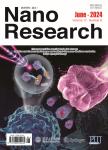A realistic topological p-n junction at the Bi2Se3 (0001) surface based on planar twin boundary defects
A realistic topological p-n junction at the Bi2Se3 (0001) surface based on planar twin boundary defects作者机构:Instituto de Ciencia de Materiales de Madrid (ICMM-CSIC) Cantoblanco Madrid 28049 Spain
出 版 物:《Nano Research》 (纳米研究(英文版))
年 卷 期:2017年第10卷第5期
页 面:1784-1793页
核心收录:
学科分类:0808[工学-电气工程] 07[理学] 0809[工学-电子科学与技术(可授工学、理学学位)] 0805[工学-材料科学与工程(可授工学、理学学位)] 0702[理学-物理学]
基 金:supported by the Spanish Ministry of Economy and Competitiveness through Grant
主 题:topological insulators,p n junctions,spintronics,electronic devices,twin boundaries
摘 要:We propose a realistic topological p-n junction (TPNJ) by matching two Bi2Se3 (0001) slabs with opposite arrangements of planar twin boundary defects. The atomistic modeling of such a device leads to dislocation defects in the hexagonal lattice in several quintuple layers. Nevertheless, total energy calculations reveal that the interface relaxes, yielding a smooth geometrical transition that preserves the nearest-neighbors fcc-type geometry throughout these defect layers. The electronic, magnetic, and transport properties of the junction have then been calculated at the ab initio level under open boundary conditions, i.e., employing a thin-film geometry that is infinite along the electron transport direction. Indeed, a p-n junction is obtained with a built-in potential as large as 350 meV. The calculations further reveal the spin texture across the interface with unprecedented detail. As the main result, we obtain non-negligible transmission probabilities around the F point, which involve an electron spin-flip process while crossing the interface.



